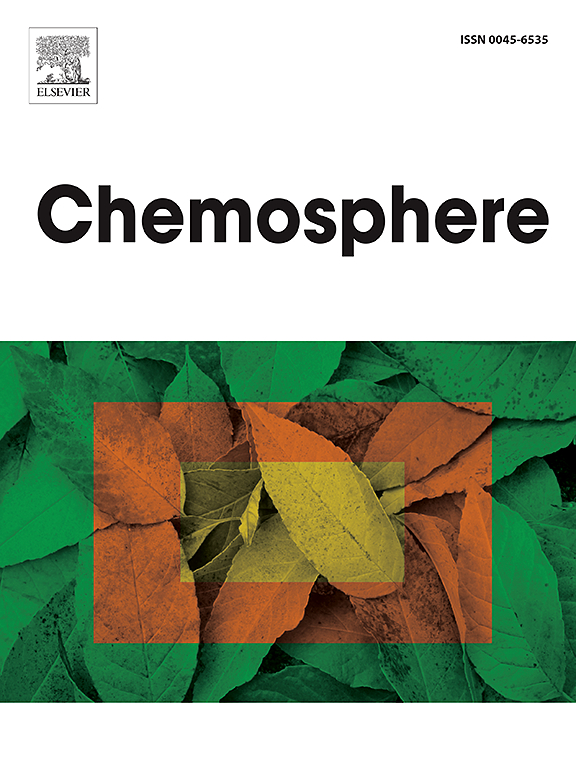Degradation of azo dye (direct red 89) using H2O2/periodate process-parameter optimization and mixture composition evaluation
IF 8.1
2区 环境科学与生态学
Q1 ENVIRONMENTAL SCIENCES
引用次数: 0
Abstract
As a fast and efficient process, a periodate (PI)-based advanced oxidation process was used to degrade direct red 89 (DR89), wherein hydrogen peroxide (H2O2) was employed to activate PI (H2O2/PI process) to investigate the effect of operating parameters and mixture composition. The PI was efficiently activated by H2O2 to degrade 67% of DR89 within 1 min. Acidic pH was more favorable to high-efficiency degradation than the basic pH; at pH 3 degradation rate was 94.31%, while it was only 20.92% at pH 11. The degradation rates were further enhanced with increasing H2O2 and PI dose up to certain optimum values, later it decreased which was dependent upon the amount of hydroxyl (●OH) and iodyl (IO3●) radicals produced. The quenching experiments suggested that IO3●, ●OH, 1O2, and O2●− are the predominant reactive species during H2O2/PI process, while O2●− radicals are the primary precursor of other reactive oxygen species. The results of this study suggested that H2O2/PI is the efficient and rapid treatment method to degrade persistent organic pollutants (POPs) from polluted wastewater sources.

H2O2/高碘酸盐工艺降解偶氮染料(直接红89)-参数优化及混合物组成评价。
采用高羧酸盐(PI)为基础的高级氧化工艺降解直接红89 (DR89),采用过氧化氢(H2O2)活化PI (H2O2/PI工艺),考察操作参数和混合物组成对其降解效果的影响。H2O2可有效活化PI,在1 min内降解67%的DR89。酸性pH比碱性pH更有利于高效降解;pH值为3时的降解率为94.31%,pH值为11时的降解率仅为20.92%。随着H2O2和PI剂量的增加,降解率进一步提高,达到一定的最佳值后,降解率下降,这与羟基(●OH)和碘基(IO3●)自由基的产生有关。猝灭实验表明,在H2O2/PI过程中,IO3●、●OH、1O2和O2●-是主要的活性自由基,而O2●-自由基是其他活性氧的主要前体。研究结果表明,H2O2/PI是一种高效、快速的降解污水源中持久性有机污染物(POPs)的处理方法。
本文章由计算机程序翻译,如有差异,请以英文原文为准。
求助全文
约1分钟内获得全文
求助全文
来源期刊

Chemosphere
环境科学-环境科学
CiteScore
15.80
自引率
8.00%
发文量
4975
审稿时长
3.4 months
期刊介绍:
Chemosphere, being an international multidisciplinary journal, is dedicated to publishing original communications and review articles on chemicals in the environment. The scope covers a wide range of topics, including the identification, quantification, behavior, fate, toxicology, treatment, and remediation of chemicals in the bio-, hydro-, litho-, and atmosphere, ensuring the broad dissemination of research in this field.
 求助内容:
求助内容: 应助结果提醒方式:
应助结果提醒方式:


